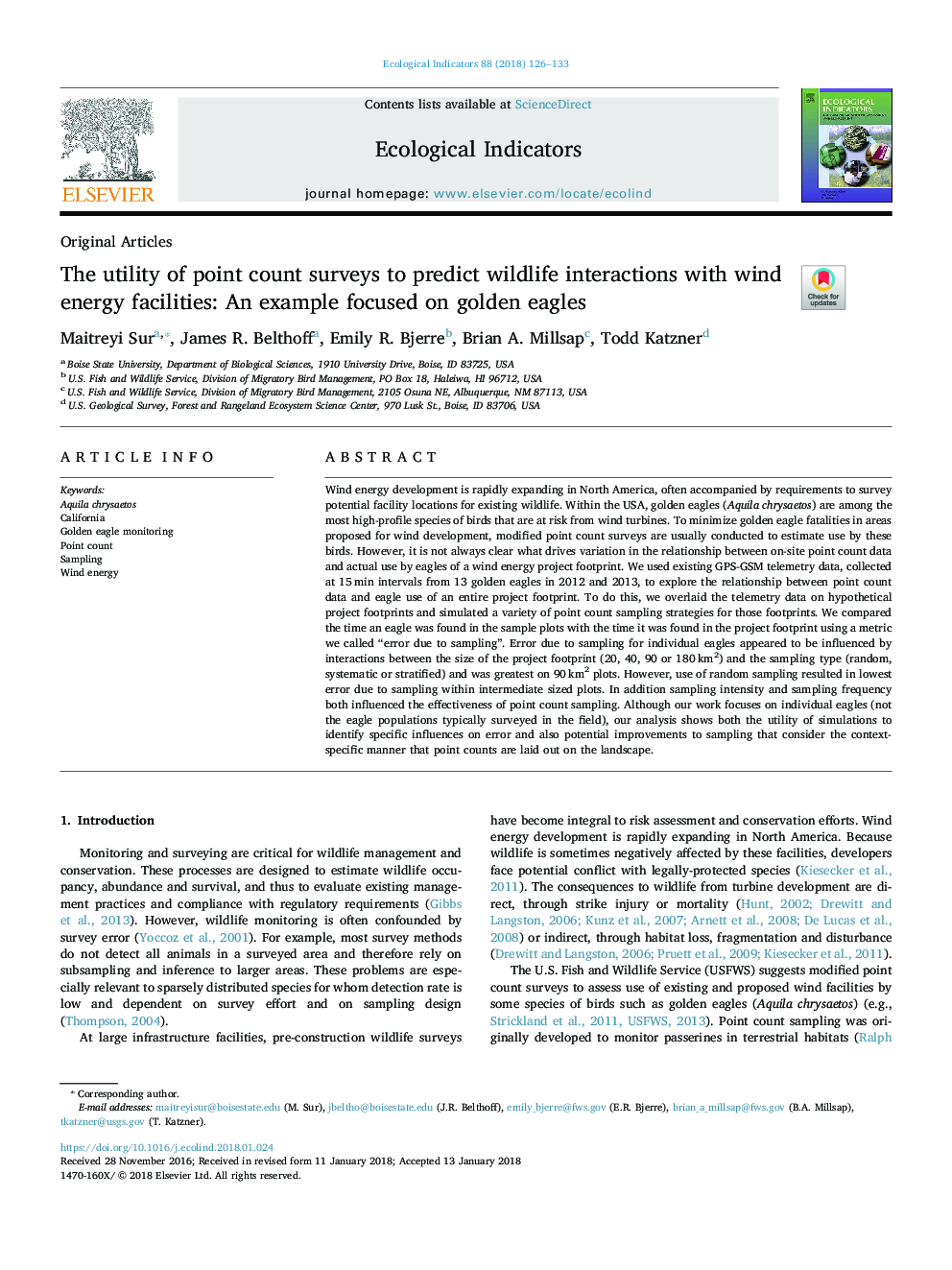| کد مقاله | کد نشریه | سال انتشار | مقاله انگلیسی | نسخه تمام متن |
|---|---|---|---|---|
| 8845559 | 1617114 | 2018 | 8 صفحه PDF | دانلود رایگان |
عنوان انگلیسی مقاله ISI
The utility of point count surveys to predict wildlife interactions with wind energy facilities: An example focused on golden eagles
ترجمه فارسی عنوان
استفاده از تعداد نقاط بررسی برای پیش بینی تعاملات حیات وحش با امکانات انرژی باد: مثال بر روی عقاب طلایی متمرکز است
دانلود مقاله + سفارش ترجمه
دانلود مقاله ISI انگلیسی
رایگان برای ایرانیان
کلمات کلیدی
موضوعات مرتبط
علوم زیستی و بیوفناوری
علوم کشاورزی و بیولوژیک
بوم شناسی، تکامل، رفتار و سامانه شناسی
چکیده انگلیسی
Wind energy development is rapidly expanding in North America, often accompanied by requirements to survey potential facility locations for existing wildlife. Within the USA, golden eagles (Aquila chrysaetos) are among the most high-profile species of birds that are at risk from wind turbines. To minimize golden eagle fatalities in areas proposed for wind development, modified point count surveys are usually conducted to estimate use by these birds. However, it is not always clear what drives variation in the relationship between on-site point count data and actual use by eagles of a wind energy project footprint. We used existing GPS-GSM telemetry data, collected at 15â¯min intervals from 13 golden eagles in 2012 and 2013, to explore the relationship between point count data and eagle use of an entire project footprint. To do this, we overlaid the telemetry data on hypothetical project footprints and simulated a variety of point count sampling strategies for those footprints. We compared the time an eagle was found in the sample plots with the time it was found in the project footprint using a metric we called “error due to sampling”. Error due to sampling for individual eagles appeared to be influenced by interactions between the size of the project footprint (20, 40, 90 or 180â¯km2) and the sampling type (random, systematic or stratified) and was greatest on 90â¯km2 plots. However, use of random sampling resulted in lowest error due to sampling within intermediate sized plots. In addition sampling intensity and sampling frequency both influenced the effectiveness of point count sampling. Although our work focuses on individual eagles (not the eagle populations typically surveyed in the field), our analysis shows both the utility of simulations to identify specific influences on error and also potential improvements to sampling that consider the context-specific manner that point counts are laid out on the landscape.
ناشر
Database: Elsevier - ScienceDirect (ساینس دایرکت)
Journal: Ecological Indicators - Volume 88, May 2018, Pages 126-133
Journal: Ecological Indicators - Volume 88, May 2018, Pages 126-133
نویسندگان
Maitreyi Sur, James R. Belthoff, Emily R. Bjerre, Brian A. Millsap, Todd Katzner,
